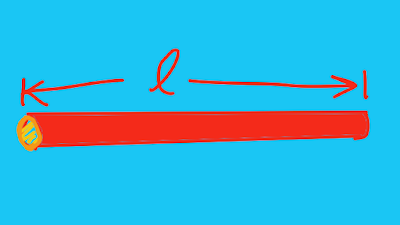Ohm’s Law: It can be defined as “The potential difference (P.D.) across a conductor is proportional to the current flowing through it provided that physical conditions remain constant.” If V = Potential Difference (P.D.)
I= current
Then we can write V ∝ I
Or V= I. R
R= Constant and it is known as resistance of the conductor.
It also means that
V/I = Constant(R) , If all surrounding conditions are constant.
The resistance of a conductor depends on:
1. Length of the conductor.
2.Area of cross section of the conductor.
3.Type of material of the conductor.
It is because of the type of the material different conductors have different conductance. Copper is more good conductor than iron. Similarly silver is more good conductor than copper. Conductance of silver is slightly more than copper. As silver is costlier than the copper therefore we use copper instead of silver to ignore slight advantage of conductance.
4. Temperature of the conductor.
If the temperature rise is from t10C to t20c and co-efficient of temperature is α.
Let Resistance at t10c = R0
and let Resistance at t20C = Rt
Then we can write
Rt = R0 (1+ α . ∆t)
Where ∆t = (t2 -t1 )0c



